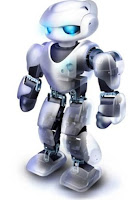A man talking on his cell phone ended his call and then ended up in hospital. In one of my earlier posts (Cell Phone on Fire) I mentioned about how cell phone can actually start a fire or explode.
Aron Embry, who was in Cedar Hill, Texas, said he had just finished a call when he said he heard a loud "pop."
He then felt something trickling down his face - it was blood.
His ear was bleeding profusely, and he was immediately taken to the emergency room at Parkland Memorial Hospital in Dallas. He received four stitches, but said there was no hearing loss.
The glass on the face of the Motorola Droid smartphone shattered. He said he had bought it just two days earlier.
"Once I got to the mirror and saw it, it was only then I kind of looked at my phone and realised that the screen had appeared to burst outward," he said.
The phone still appeared to be functioning with its battery intact.


























